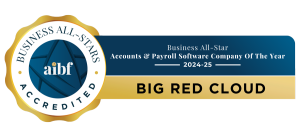Big Red Cloud: Market you Business Toward the Right Demographic
There are two words in business today that have always been and will forever be the subject of so many business strategies relating to demogrphics, market research programs, business plans, retention plans and communication strategies worldwide :”Target Market”. Whether your business offers the type of product or service that is particularly attractive to a niche target market, or is the type of offering that could be attractive to everyone given the right marketing strategies across each demographic, you really need to decide who are, and how to market productively to, your target market.
And yet in an era when society demands boundaries to broken down amongst people, and people demand equality on all fronts, with no distinctions to be made based on age, gender, ethnicity, sexual orientation and political or religious beliefs, you still need to be able to carve out clear differences amongst the demographics within your target market. Why? Because people communicate differently based on their experiences and interactions within the world, and businesses need to be able to communicate differently with distinct groups of the community, and the population at large.
That’s why generational-based market segmentations have become so popular and so successful. They take into account not just age, but the social experiences of these generations, the statistical educational, technological and socioeconomic values of each, enabling enterprises to weave these strands into branding, marketing, advertising, and service strategies that appeal to the segments that matter for that enterprise. Practically speaking this is a winning target market segmentation strategy that is employed naturally – for example, if you are marketing towards the elderly on TV, you will pick ad breaks on TV shows that they like, and use actors of a similar age range to draw parallels for viewers and to make the marketing relatable.
This generational segmentation has been summarised by a number of key characteristics that sometimes bring up surprising data in research however.
Gen Z
Generation Z (also called iGen or Post-Millenials) are the young adults and teens of today, being born typically between 1996 and 2010. A significant aspect of this generation is the widespread use of technology and the internet from a young age. Not only the use of internet technology in aspects such as toys and games, but the older teens and young adults steer away from traditional marketing and towards more modern methods of advertising such as following Instagram, YouTube and Snapchat blog and vlog stars whom they look toward for guidance on what’s hot and what’s not. Hence swathes of high street brands have started partnerships with many of these young icons (many of whom may be Gen Z themselves) in an effort to capture the market through the channels most beloved by this generation. Comfortable with technology and the children of the youngest Boomers who worked hard steady long careers with significant savings and disposable income in recent years, Gen Z – while they may not be working themselves – tend to have access to significant amounts of income through their parents.
Gen Y or ‘Millenials’
Born between 1983 and 1995, Millenials are the generation for whom the world is their oyster. Having witnessed massive social and technological change in a rapid timeframe comparatively to history, Millenials are inspired to believe that anything is possible and that life is for living.
They are passionate about social change, social justice and reject the long steady careers in a single company that was the prized ambition of their Boomer parents. They love to hunt out new experiences whether that be through travelling, dining out, swapping careers or seeking out great new deals. They have very little in the way of consumer loyalty, instead changing brands that can offer them better deals overall, not just a reduced price. They give loyalty instead to brands with a social conscience and make real change, rather than just the beleaguered ‘corporate responsibility’ gestures of old. Sometimes criticized for feeling and acting ‘entitled’, many Millenials are the generation that came out of university education only to hit the economic downturn that started in 2009 and felt their hard efforts to qualify in various professions entitled them to the jobs that are implicitly promised by getting degrees, only to find that they needed to emigrate or evolve into young entrepreneurs to succeed.
Gen X
Typically categorised as those born between the late 1960s and the early 1980s, Gen Xers were children during a time of shifting societal values were increasing numbers of women and mothers returned to the workforce. This generation is well into the stride of their professional careers but are marrying less and having less children than the Boomers as inflation and rising costs in things like mortgages and childcare has caused a need for two parent incomes in order to meet the family costs. This has led to significant entrepreneurship in this generation, and these were the first generation to start making their mark across the internet, being early adopters of eCommerce, smartphones, internet banking and all the tech innovation of the 2000’s. They trust technology and have integrated it across their homes and introduced it to their children. They are considered independent, resourceful, self-managing, adaptable, cynical, pragmatic, skeptical of authority, and as seeking a work-life balance with quality family time being among their highest values.
Boomers
With retirement ages having been extended somewhat in recent years, Boomers are still considered to be a generation with plenty of disposable income. Boomers are in their fifties, sixties and early seventies now. Many are not quite yet retired and still looking to remain active in their professional lives and be considered capable assets in the workplace and in every way senior to the younger and more ambitious Gen Xers. Looking to make good decisions now to help them in their near retirement, Boomers take the long view of things and are not so easily swayed by new brands with great deals. They are loyal to brands they have used for many years and have significant disposable income as many are mortgage-free and living comfortably, having come through the Depression in the 1980s learning to be frugal and smart consumers and seen massive rises in their property values in the 90’s and 2000s. Boomers enjoy the fine things in life, having been the first generation to really engage in global travel on a large scale and experience a rise in multicultural offerings in experiences such as food, clothing and sport as well as having had long working lives, and now in their middle years can settle down to enjoy the fruits of their labours. They have retained however their penchant for ‘value’ and not just price, for good customer service and for their company loyalty to be rewarded.
While these generational segments are intensely useful when it comes to understanding the context, values and experiences of the different generations, there can be widescale differences within each one, considering they cover a 20-30 year span inside each one. Hence when you are looking to understand the demographic and the differences between the demographics it is always good to conduct market research that will inform you of your customers’:
- Disposable income. To be able to offer appealing prices, bundles, and deals, get a view of the full average disposable income of your target market.
- Age ranges. If your business is reliant on footfall then you will need to understand the generational mix and cultural variety of customers located near to your premises
- Favourite radio/tv channels and viewing times if you are hoping to advertise here
- Access to high speed broadband, if you are looking for national or local business
- Marketing communication preferences. Is it the local papers for the Boomers or personalised advertising online for the Gen Xers? Is it app notifications for Millenials or YouTube ads for Gen Zs?
Assess your different segments and offer customer service options suitable for each segment. Decide which marketing channels are appropriate to your target market and weigh your marketing budget towards your highest value segment. Revise your market research every 3-5 years in order to keep abreast of changes in technology, society and economic values that may affect your marketing strategy while refreshing your branding to stay contemporary and relevant to your target market.




